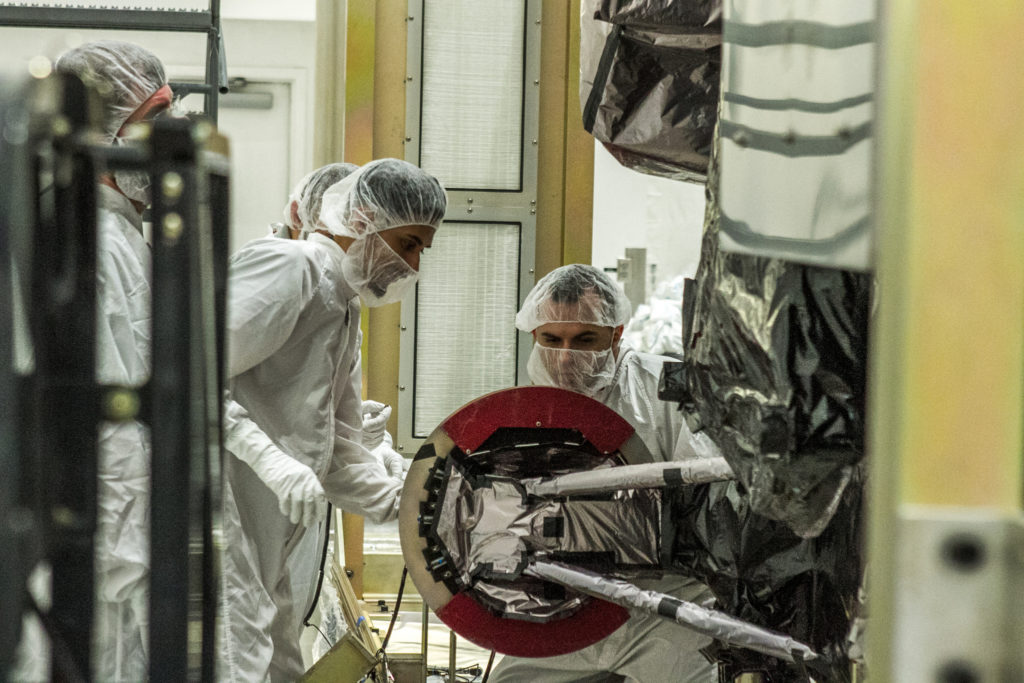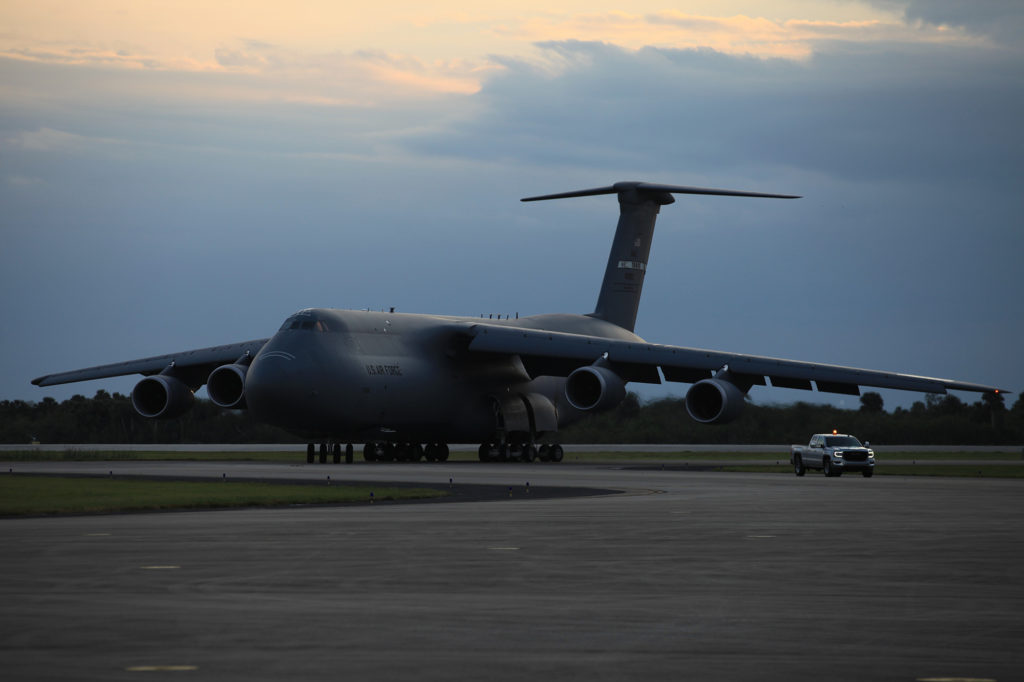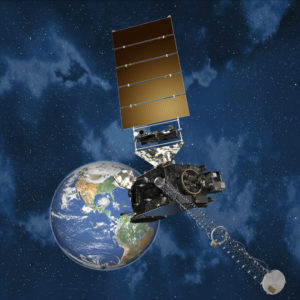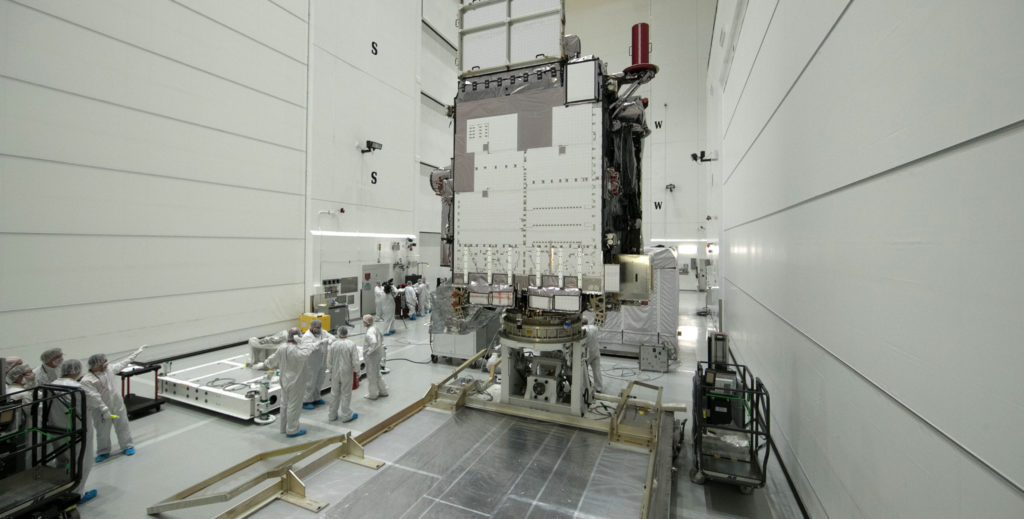
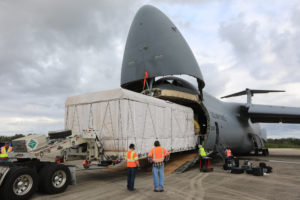
Technicians and engineers at the Astrotech Space Operations payload processing facility have placed NOAA’s GOES-S satellite on a work stand to begin routine but critical preflight inspections, tests and checkouts. These processing milestones will ensure the spacecraft is ready to withstand the rigors of launch and take its place as the second in a new generation of advanced geostationary weather satellites.
The satellite arrived Dec. 4 at NASA’s Kennedy Space Center aboard a U.S. Air Force C-5M Super Galaxy cargo transport aircraft and was offloaded the following morning (right). It was then transported to the Astrotech facility, located in nearby Titusville, Florida, to begin processing. Inside the Astrotech high bay, team members carefully removed the shipping container, inspected the satellite (below) and placed it into a workstand (above) for prelaunch work to begin.
